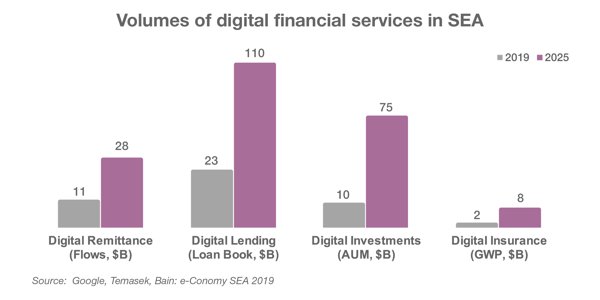The analysts of Robocash Group defined trends that have directed alternative lending in Southeast Asia in the current year. The increase in number and regional expansion of local players on the background of the intensified regulation and a particular focus on financial inclusion of MSMEs, as well as the formation of the regional cross-border market have become the most remarkable trends.
In 2019, local and international fintech players have been actively scaling in the region. One of the most significant indicators of the trend is the attention to alternative lending in SEA from local nonfinancial companies. Thus, to enhance the customer experience, leading technology companies like Grab and Go-jek started providing lending and micro-insurance services. In return, it has proved the high potential implied within the financial inclusion of people and micro, small and medium enterprises (MSMEs) staying without access to banks.
At the same time, partially facilitated by the sharp tightening of the regulation of P2P lending in China, an increase in the number of players has made governments in Southeast Asia pay closer attention to alternative lending. In the first turn, it concerns intensified supervision under the segment. For instance, in early October 2019, the Investment Alert Task Force reported about
133 illegal P2P lending companies in Indonesia. Some other countries are also catching up preparing their pilot schemes, e.g. Vietnam.
However, seeing the advantages provided by financial technologies, countries also try to support the segment. One of the focus points is the low access to finance for SMEs. Thus, in Malaysia, 55% of SMEs have access to banks. Still, the Securities Commission encourages local businesses to consider both traditional and alternative financing opportunities. Indonesia and the Philippines have more small businesses than most of their neighbours do. However, only 40% can access bank lending. To decrease the gap, earlier this year, the Financial Services Authority of Indonesia (OJK) asked P2P lending companies to distribute 20% of their total credit to MSMEs. Until August 2019,
60% of all P2P lending borrowers were recorded from the SME sector.
Such a profound background combined with other different factors like high Internet penetration has significantly accelerated the growth of digital lending in Southeast Asia. Google & Temasek have recently forecasted that the region’s loan book will increase two-to threefold reaching
$110 billion by 2025. At the same time, SEA has started building an entire cross-border ecosystem. The collaboration of countries within special frameworks like the Asia-Pacific Fintech Network and the pan-Asian Fintech Cooperation Committee will surely help the market to strengthen further the position of the region on the fintech scene.
—
About:
Robocash Group is an international financial group operating in the segments of consumer alternative lending and marketplace funding in Europe and Asia. The company develops robotic financial services providing lending to customers in Russia, Kazakhstan, Spain, the Philippines, Indonesia, Vietnam and India and operates the own EU-based p2p investment platform. The group develops products completely in-house using artificial intelligence, machine learning and data-driven technologies to provide precise and comprehensive risk management, comfort and speed for customers and efficiency for business.

